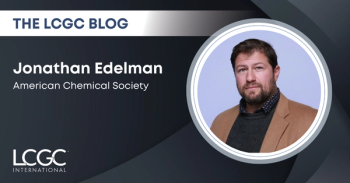
Quantification of Azoxystrobin in Water Using a Variable Wavelength and Fluorescence Detectors
A comparison between two types of detectors—variable wavelength (VWD) and fluorescence (FLD)—in quantifying azoxystrobin from water samples was conducted.
A recent study published in Chromatographia examines whether a variable wavelength detector (VMD) or a fluorescence detector (FLD) are better able to quantify the fungicide azoxystrobin in water (1). Azoxystrobin is a widely used fungicide that poses concerns regarding its presence in water sources, making accurate detection methods critical.
The research team, led by Hiago de Oliveira Gomes of the Universidade Regional do Cariri in Brazil, devised a method within a high-performance liquid chromatography (HPLC) system equipped with both VWD and FLD detectors. They employed a modified (QuEChERS) extraction technique, primarily developed for pesticide extraction in food, to isolate azoxystrobin the from water samples (1).
This study differed from previous research because it applied the FLD for azoxystrobin detection. Unlike the VWD, which relies on absorbance measurements, the FLD can detect non-fluorescent compounds by exploiting solvent effects (1). Azoxystrobin is non-fluorescent naturally, but the FLD proved capable of detecting it in water samples, underlining its potential in trace analysis (1).
The researchers needed to construct accurate analytical curves. To accomplish this, they used matrix-matched calibration, which revealed a low matrix effect in both detectors (1). In terms of linearity, the VWD displayed a coefficient of determination (R²) of 0.9989, whereas the FLD exhibited an R² of 0.9983 (1). This indicated a strong correlation between detector response and analyte concentration for both detectors.
The team also evaluated the precision and accuracy of the technique. The relative standard error (RSE) for the VWD was 6.96%, whereas the FLD demonstrated superior precision with an RSE of 5.49% (1). These results indicate that the FLD provides a more consistent and precise analysis of azoxystrobin.
Furthermore, the study determined the limit of detection (LOD) and limit of quantification (LOQ) for each detector. The VWD displayed LOD and LOQ values of 0.33 and 0.68 mg/L, respectively, whereas the FLD exhibited notably lower values, with a LOD of 0.18 mg/L and a LOQ of 0.37 mg/L (1). This suggests that the FLD is more sensitive, making it an advantageous choice for azoxystrobin analysis in water (1).
The QuEChERS extraction method, initially intended for food samples, was successfully adapted for water samples in this study. It demonstrated efficiency, achieving precision values below 20% and an accuracy range of 83.58% to 112.88% (1). These values comfortably met the criteria established by the Ministry of Agriculture, Livestock, and Supply (MAPA), the Brazilian government agency that regulates agriculture, and Document No. SANTE/11312/2021, a European Commission guidance, affirming the method's reliability for azoxystrobin analysis in water (1).
This study indicates that both the VWD and FLD detectors are suitable for the analysis of azoxystrobin in water. However, the FLD was determined to be a better alternative because of its higher sensitivity, lower LOD and LOQ values, and decreased RSE (1).
This article was written with the help of artificial intelligence and has been edited to ensure accuracy and clarity. You can read more about our
Reference
(1) De Oliveira Gomes, H.; Lopes da Silva Bento, E. C.; Robson Feitosa dos Santos, C.; et al. Comparative Study Between VWD and FLD Detector in HPLC System for Azoxystrobin Quantification in Water. Chromatographia 2023, 86, 605–615.
Newsletter
Join the global community of analytical scientists who trust LCGC for insights on the latest techniques, trends, and expert solutions in chromatography.




